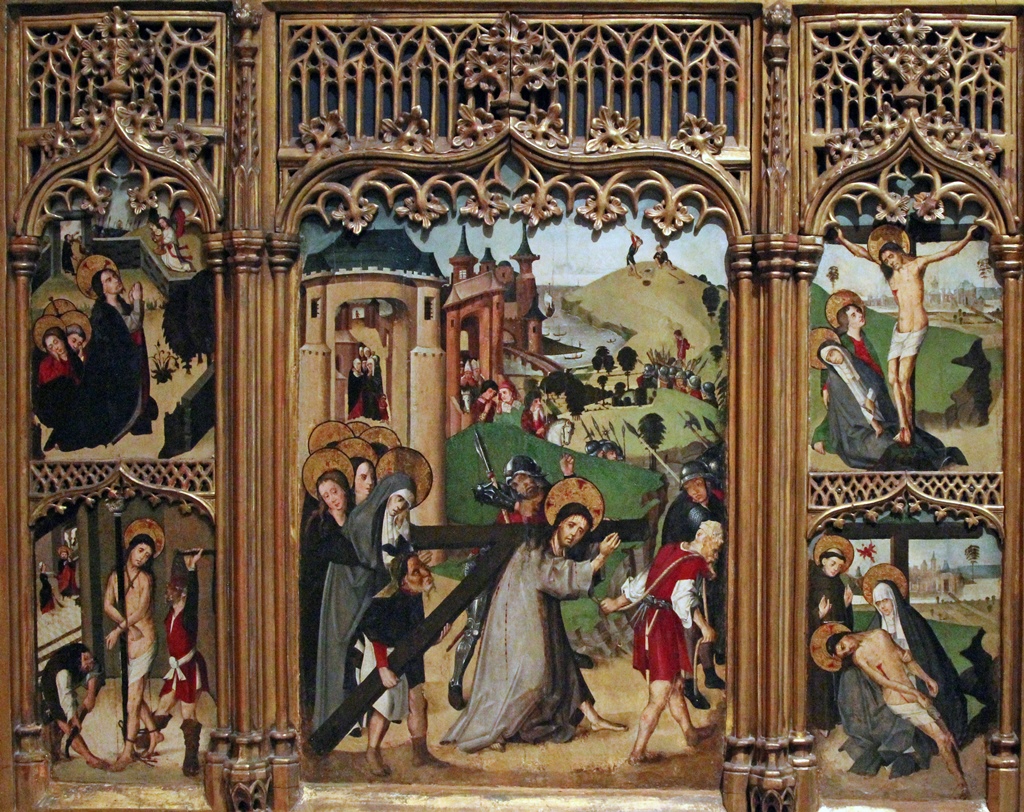The Museum of Fine Art (Museo de Bellas Artes) of Seville is ranked by many as the second most important art museum in
Spain, after the Prado in Madrid. It was founded in 1839 to house artwork seized from monasteries and convents
between 1835 and 1837 at the behest of Juan Álvarez Mendizábal. Mendizábal was briefly Prime Minister under Queen
Isabella II, and this assault on monasteries and convents, known as La Desamortización (The Confiscation), also
resulted in the closure of many such facilities. The museum itself is a former convent (the Convento de la Merced
Calzada), originally founded at the time of the reconquista of Seville. The collection is mainly art of Spanish
origin, produced from medieval times up to the early 20th Century, and as one would expect, the older items are
mainly religious in theme. Well-known Spanish artists of the genre such as Murillo, Zurbarán and Valdes Leal are
well represented. Donations of works through the 19th and 20th Centuries have diluted the religious theme somewhat,
and most of the later paintings have more to do with Spanish life.
The museum was a fairly long walk from the Alcazar, but this gave us a chance to experience more of the old town. On
arriving at the museum we found that it was surprisingly affordable (only 1.50 Euros) and not even slightly
crowded. According to our guide book photography was against the rules, but when we asked, we were told that it was
fine as long as we didn’t take flash pictures. Cool. I guess it never hurts to ask.
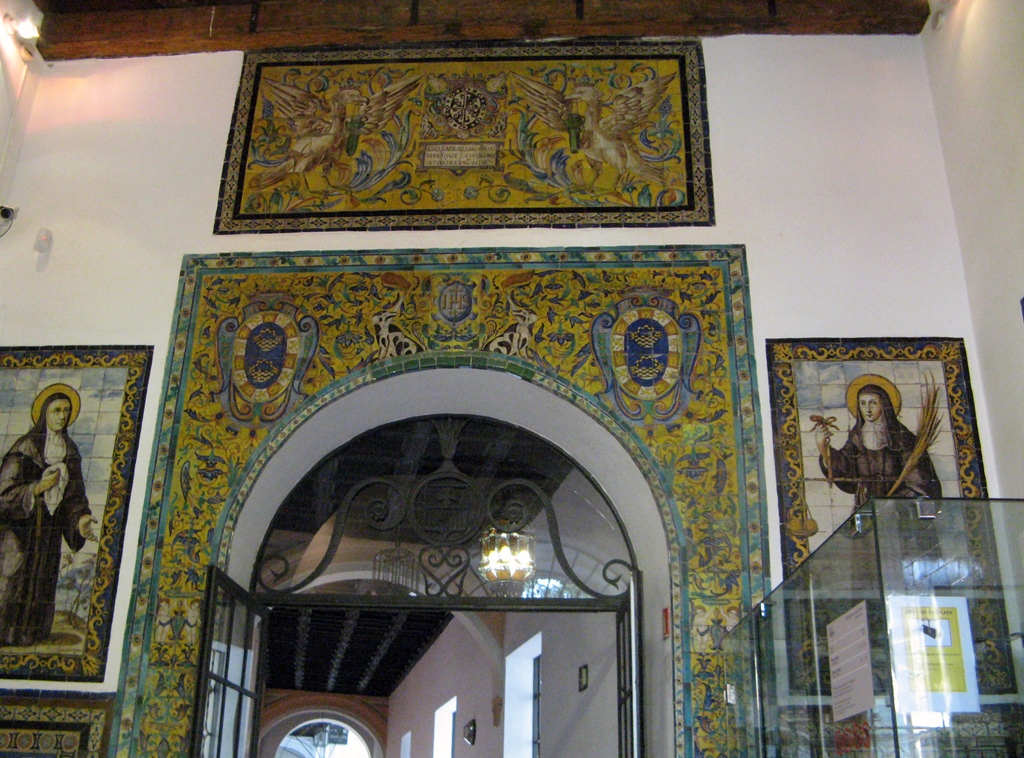
Tile Near Entry
Our visit turned out to be on the rushed side, as we only had about an hour until the museum closed. So we
started by powering our way through the older paintings.
Altarpiece of the Passion of Christ, Anonymous (1415)

Last Judgment, Martín de Vos (1570)
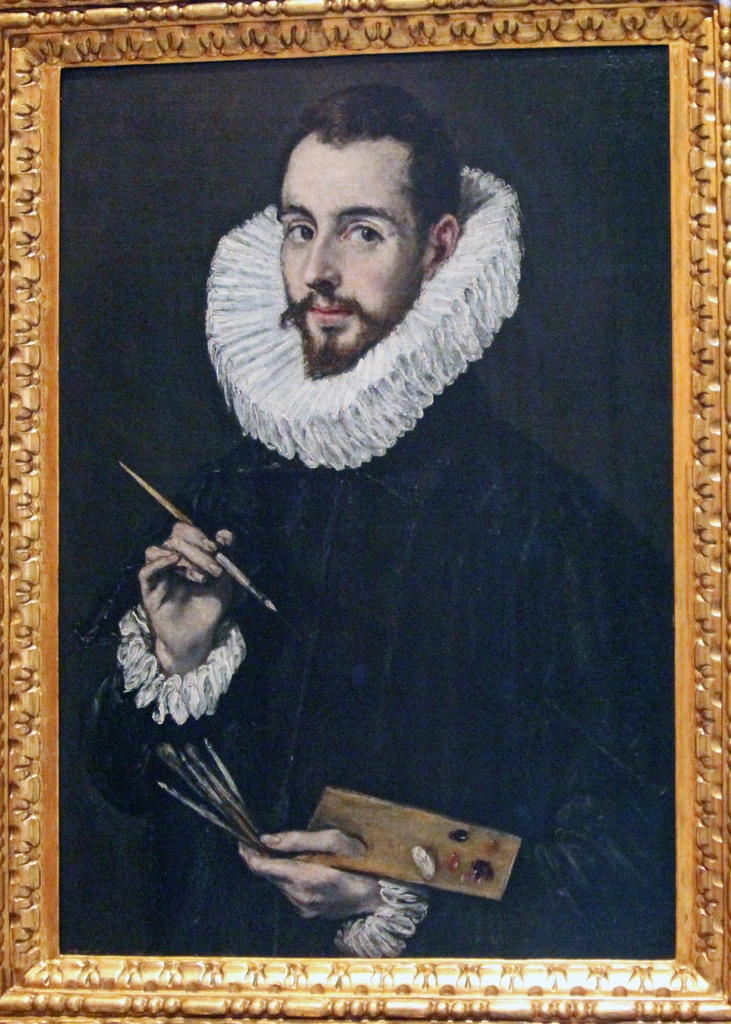
Portrait of Jorge Manuel, El Greco (1600)
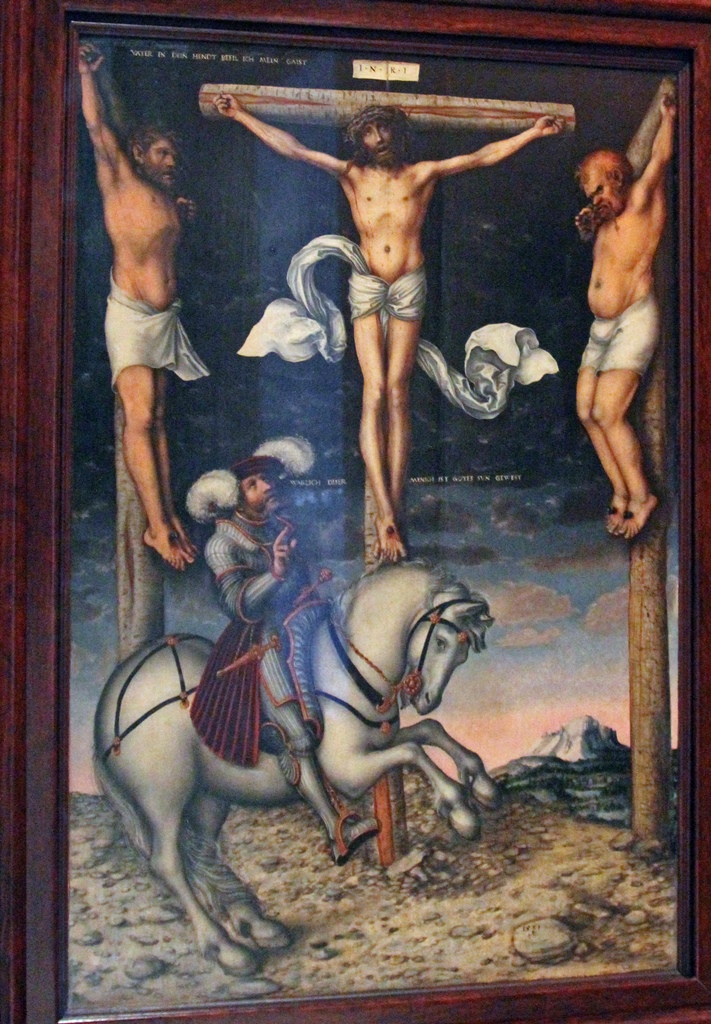
The Calvary, Lucas Cranach (1538)
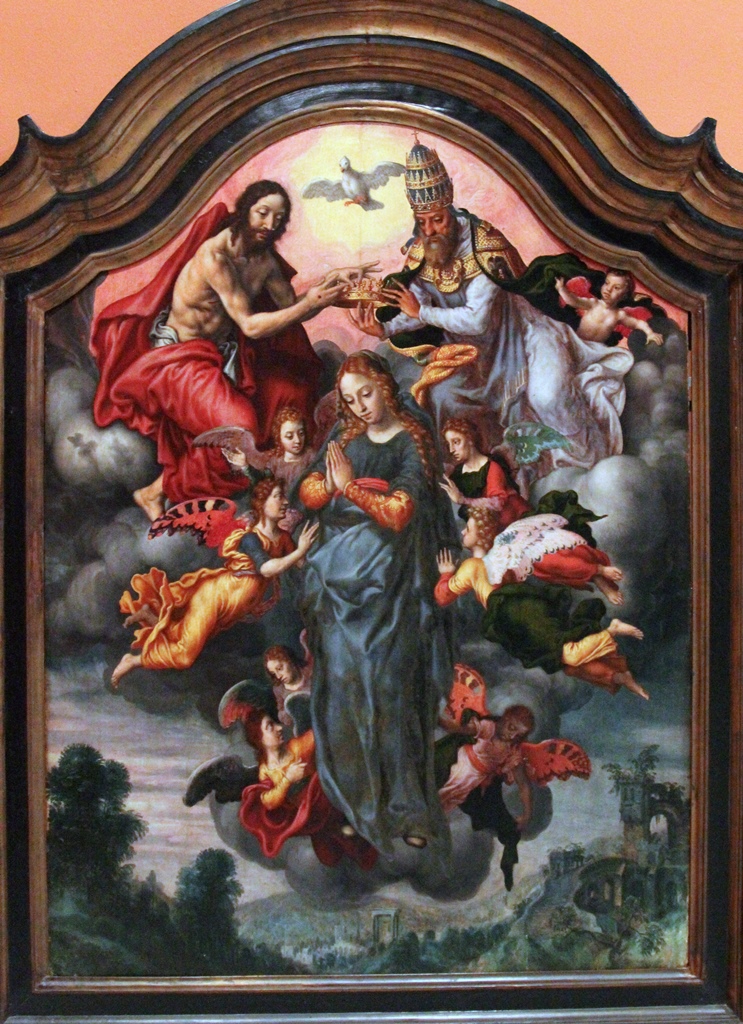
Coronation of the Virgin, Pieter Aertsen
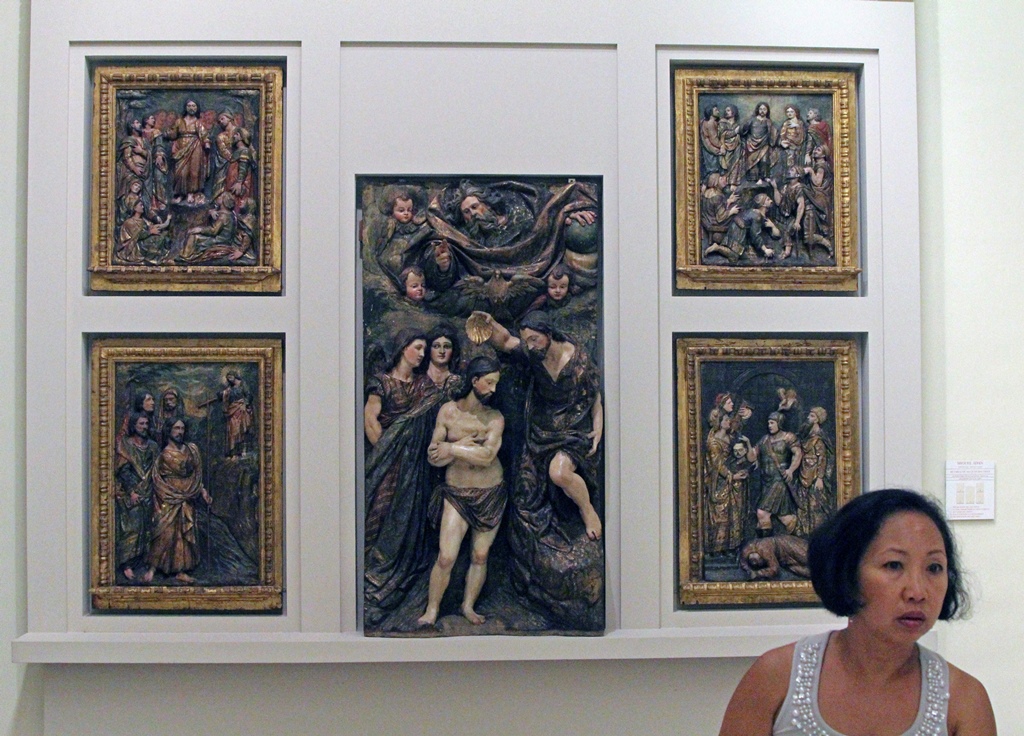
Nella and Altar of St. John the Baptist, Miguel Adan (1592-94)
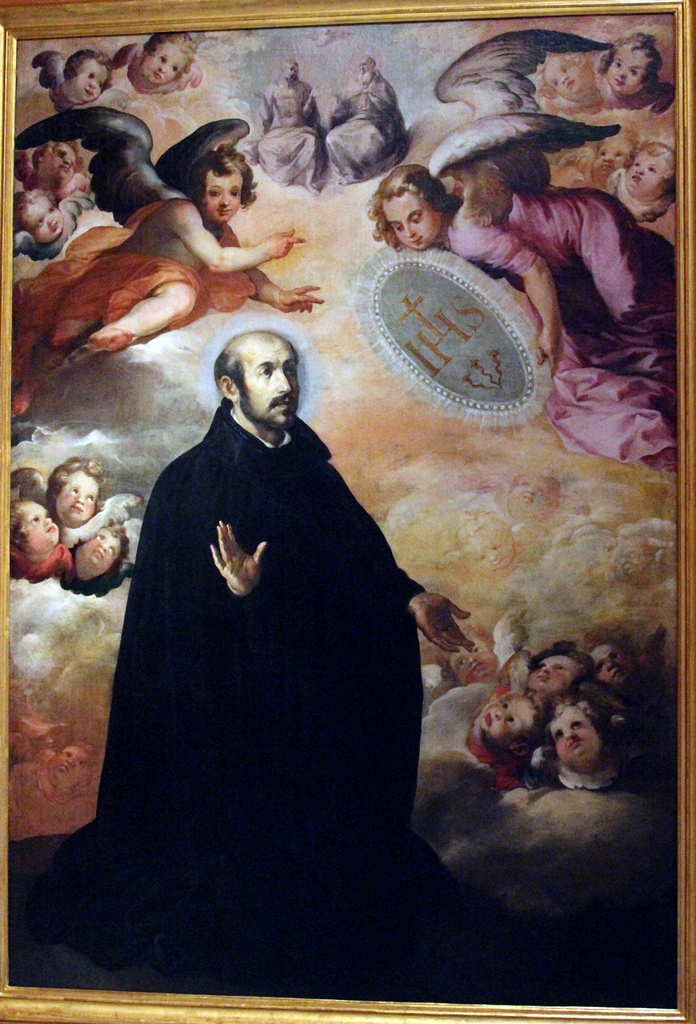
Glorification of St. Ignatius of Loyola, Francisco Herrera el Viejo (1622)
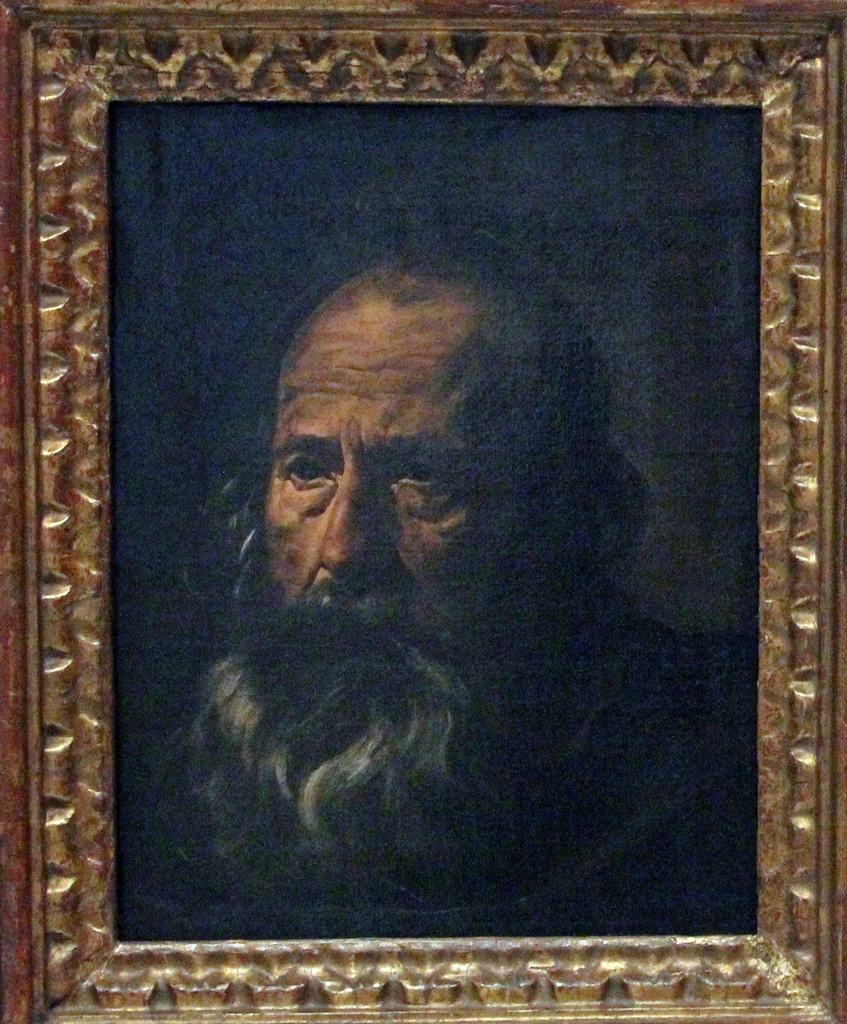
Head of an Apostle, Diego Velázquez (1620)
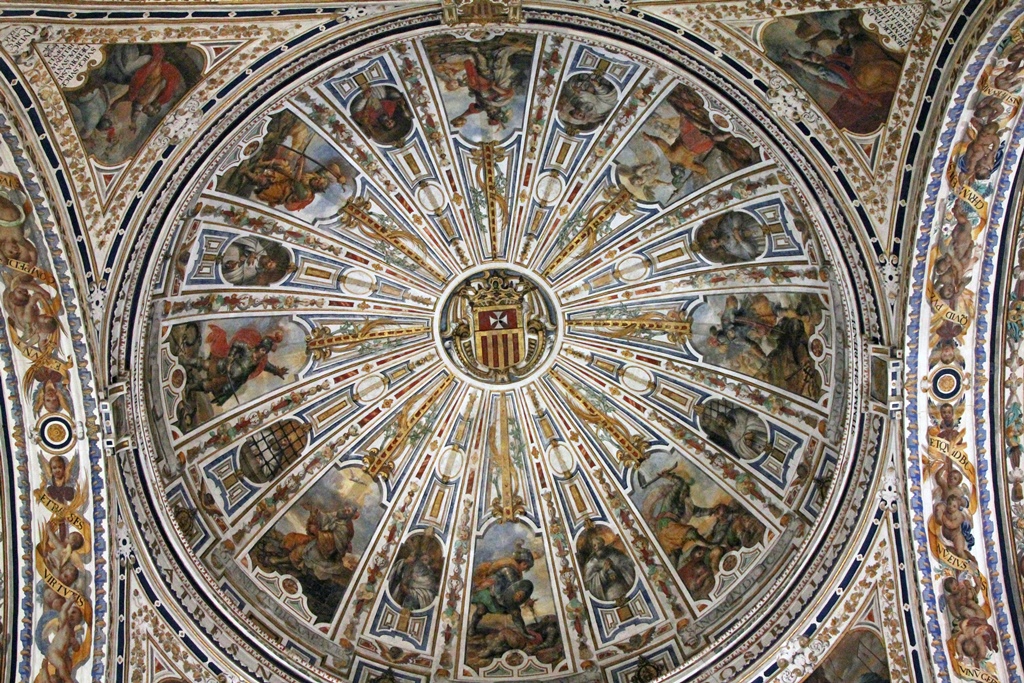
Dome

St. Anthony of Padua with the Child, Bartolomé Esteban Murillo (1668-69)
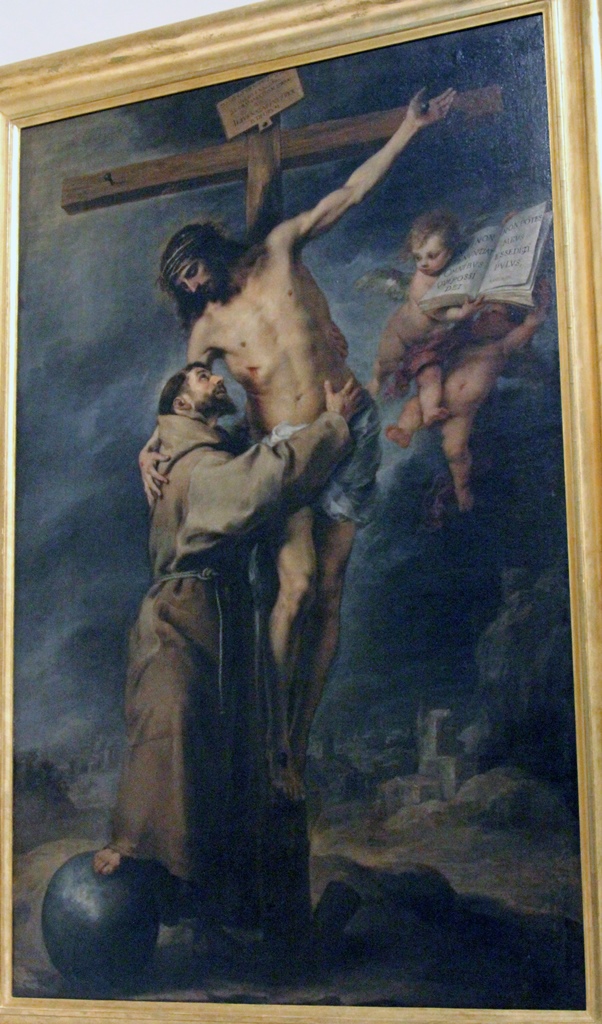
St. Francis Embracing Christ, Bartolomé Esteban Murillo (1668-69)
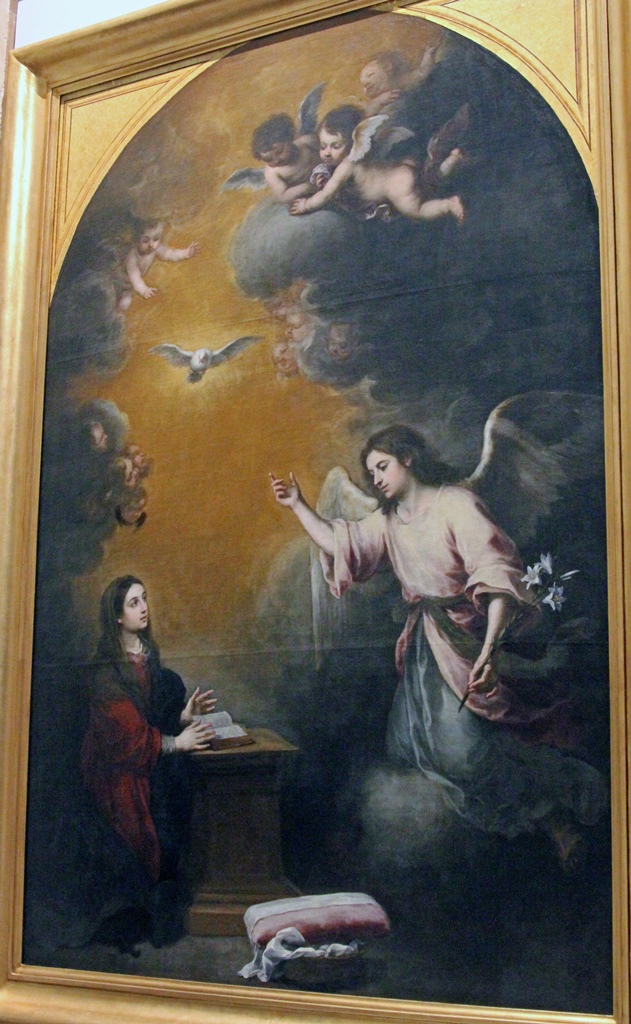
Annunciation, Bartolomé Esteban Murillo (1668)
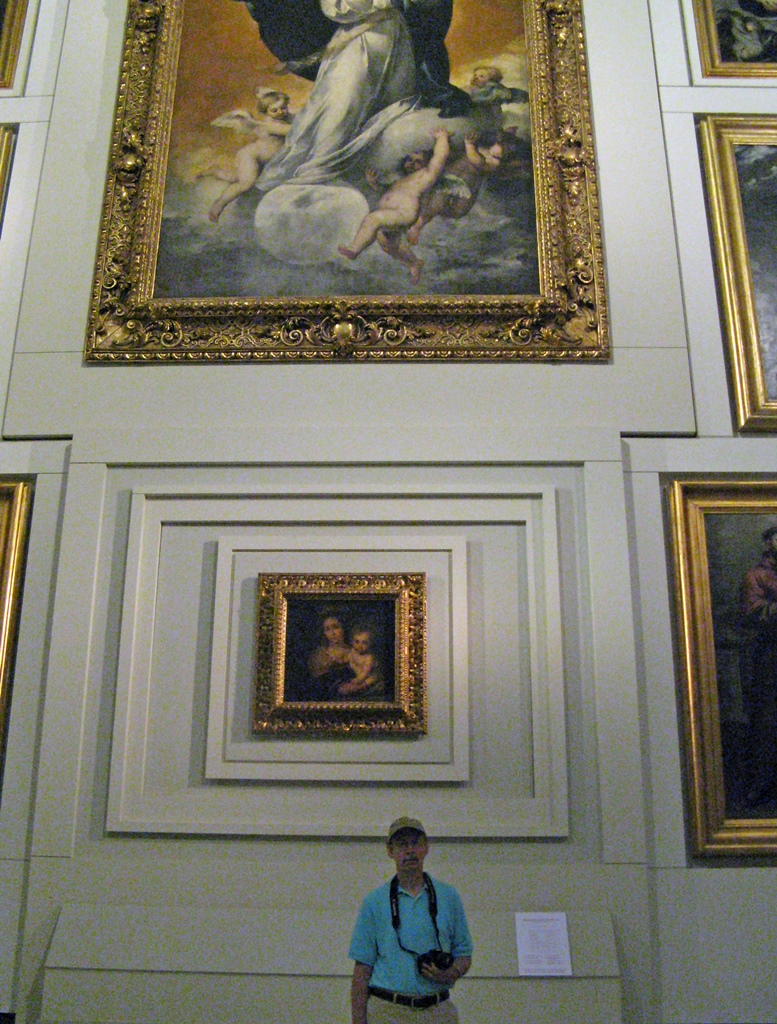
Bob and Wall of Murillo Paintings
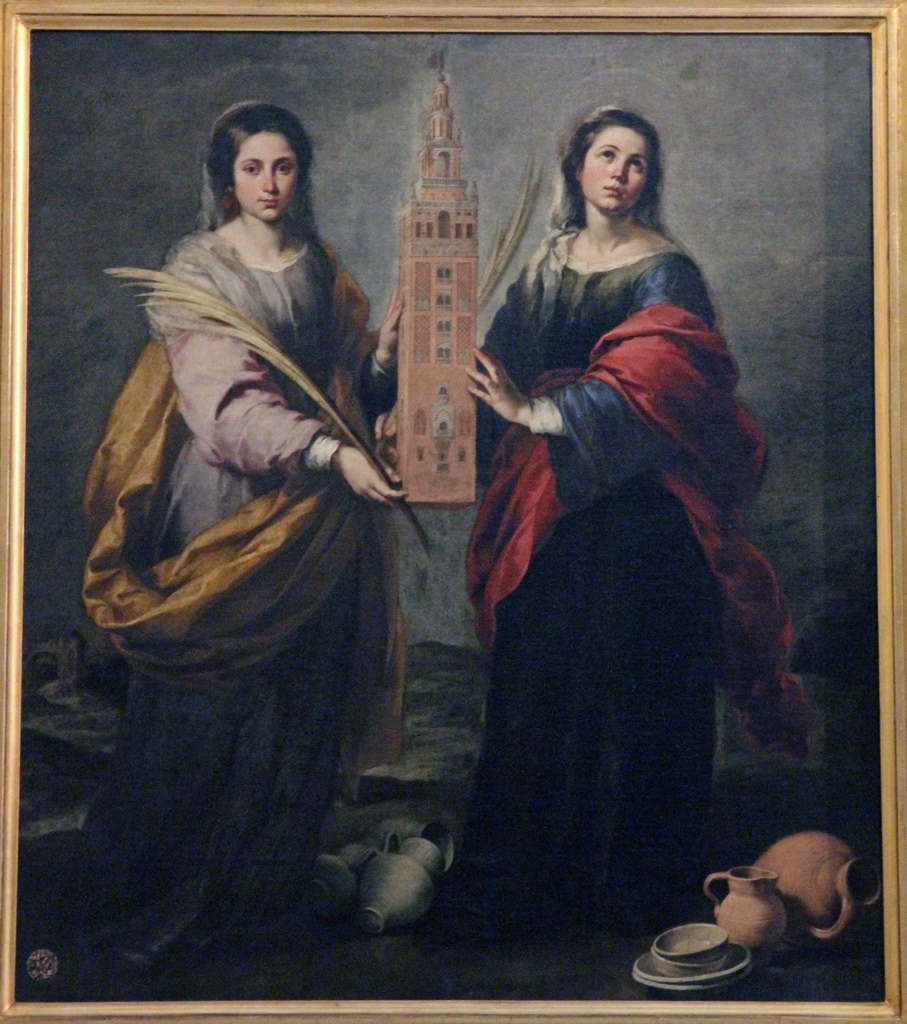
St. Justa and St. Rufina, Bartolomé Esteban Murillo (1665-66)
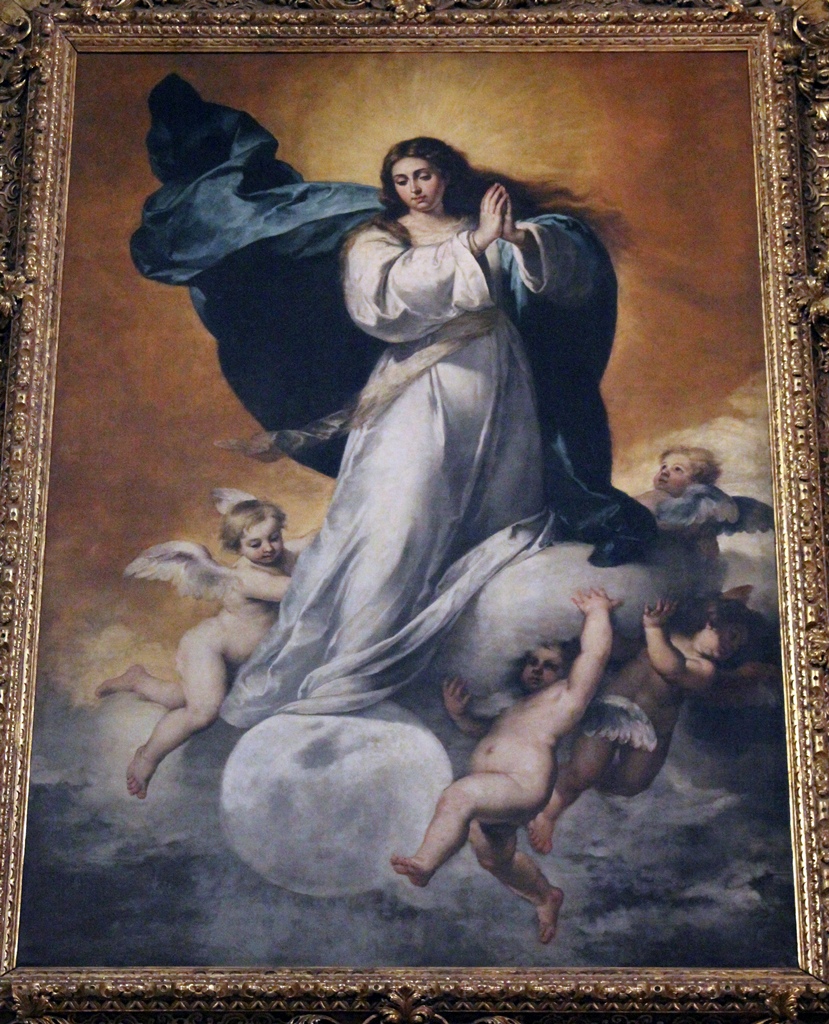
The Immaculate Conception, Bartolomé Esteban Murillo (ca. 1652)
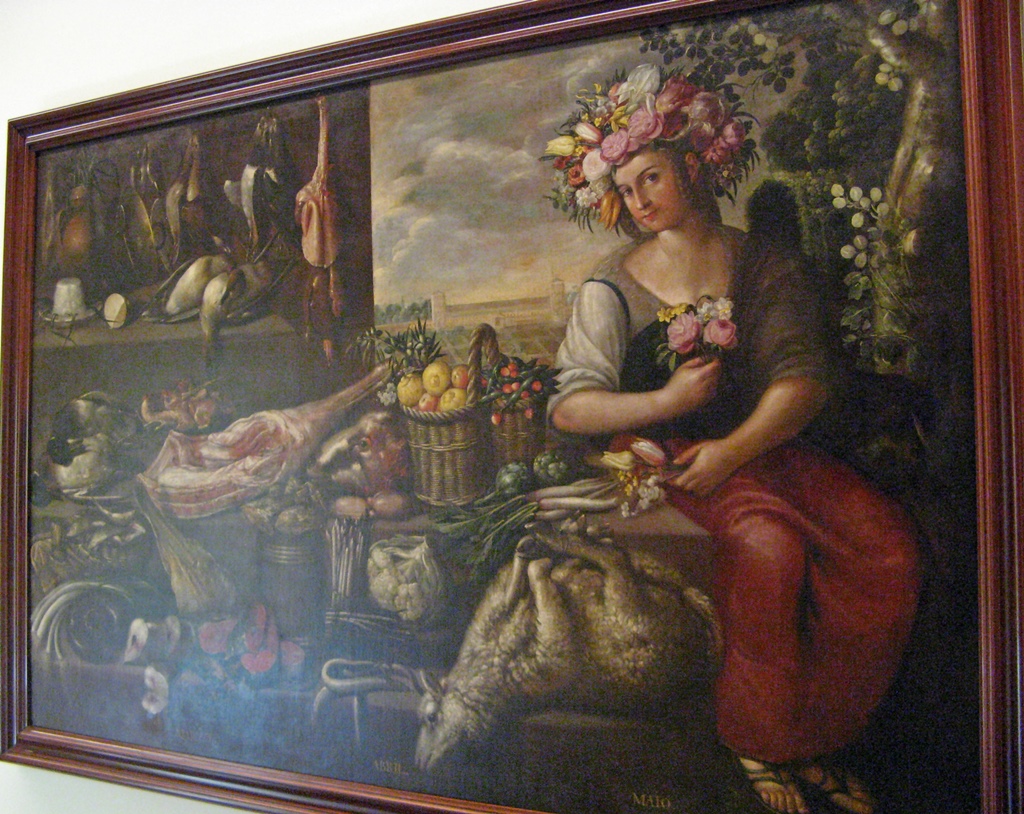
Spring, Francisco Barrera (1638)
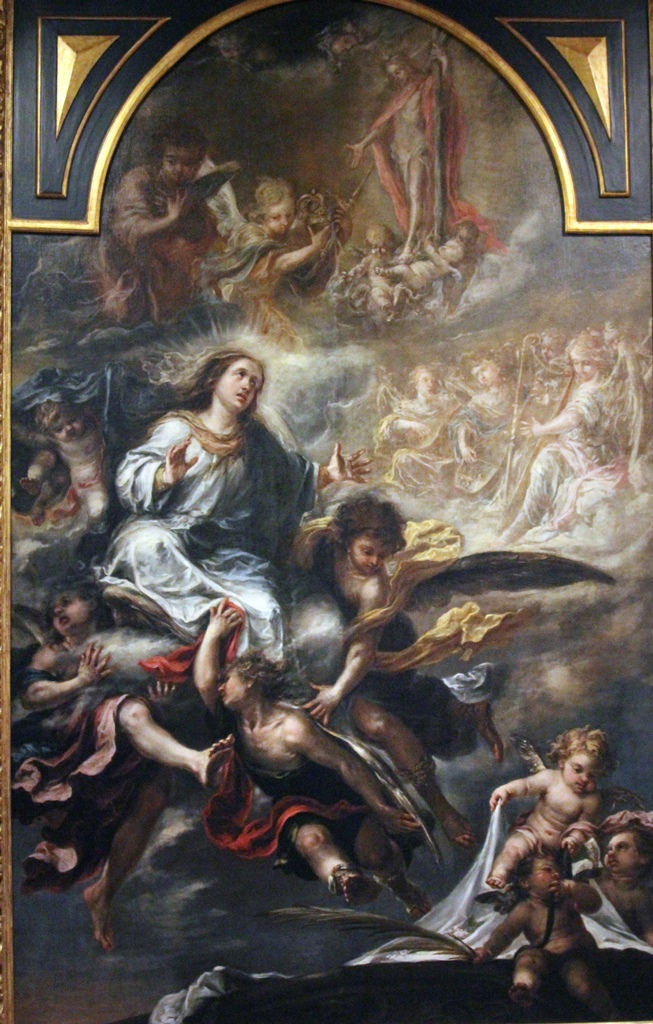
The Assumption of the Virgin, Juan de Valdés Leal (1672)
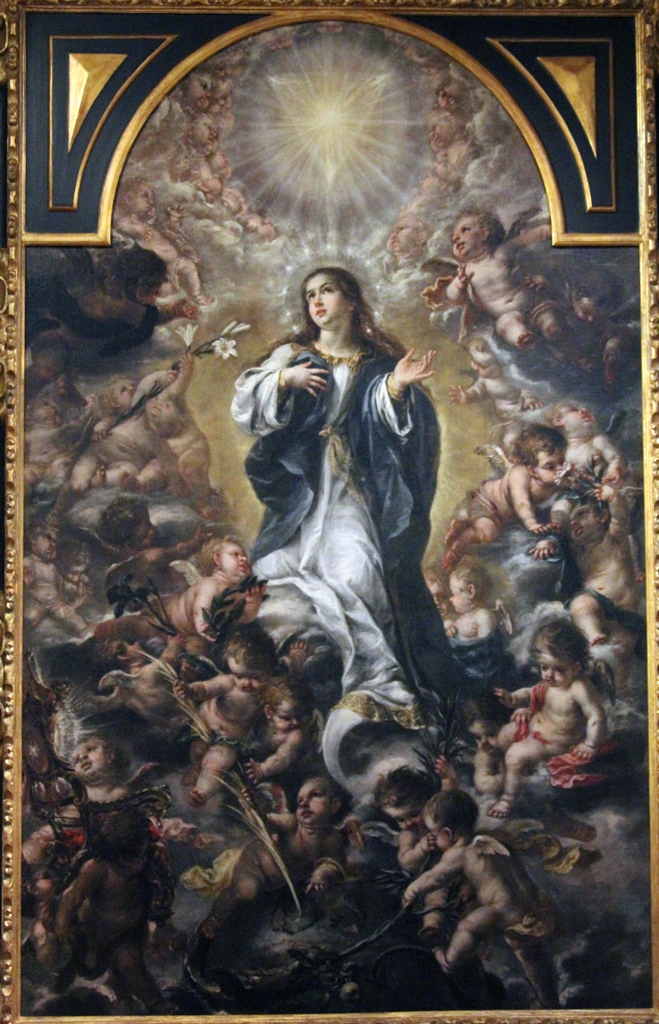
The Immaculate Conception, Juan de Valdés Leal (1672)
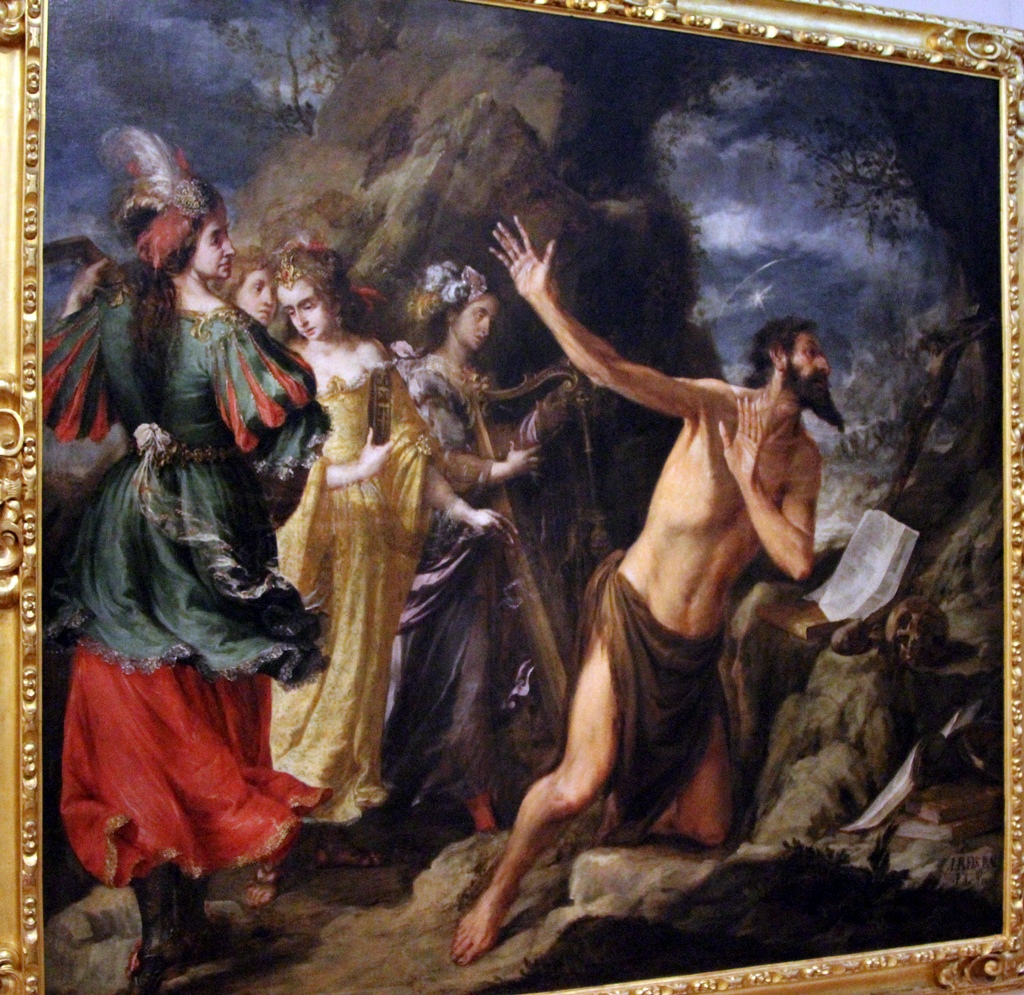
The Temptation of St. Jerome, Juan de Valdés Leal (1657)
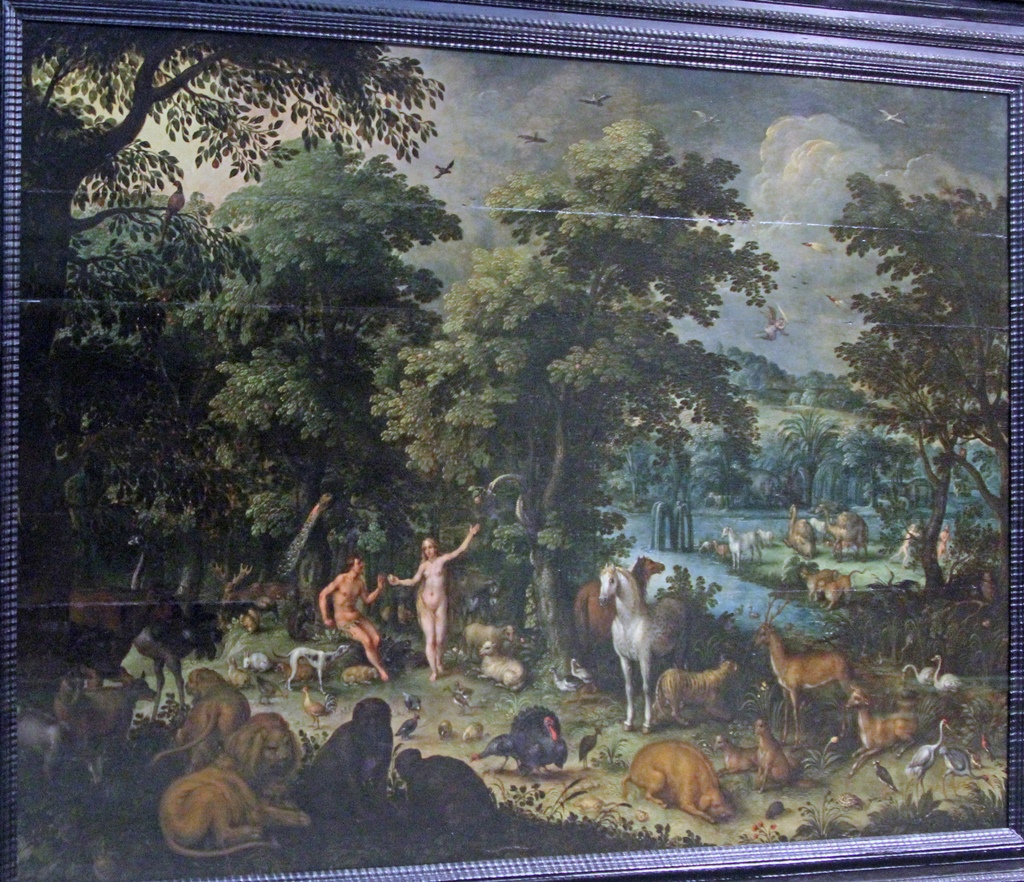
Earthly Paradise, Jan Brueghel the Elder (1610)

Still Life with Grapes and Apples, Giambattista Ruoppolo (1670)

St. Hugh in the Refectory, Francisco de Zurbarán (1655)
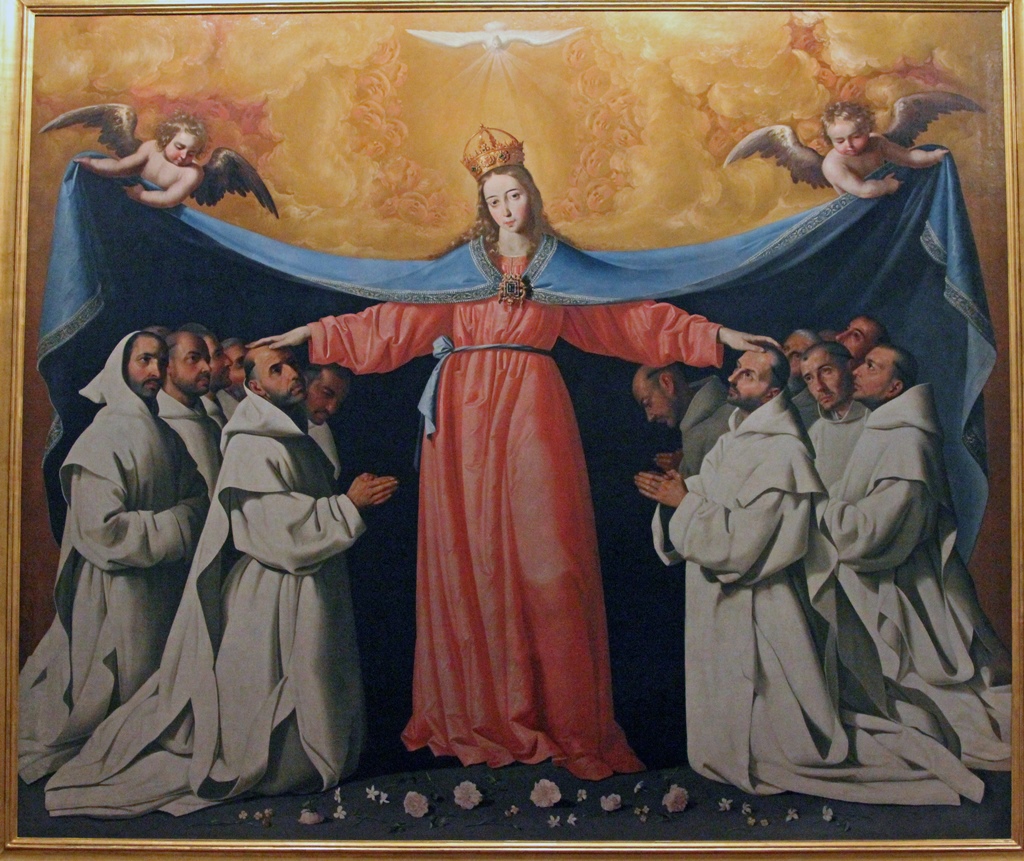
The Virgin of the Caves, Francisco de Zurbarán (1655)
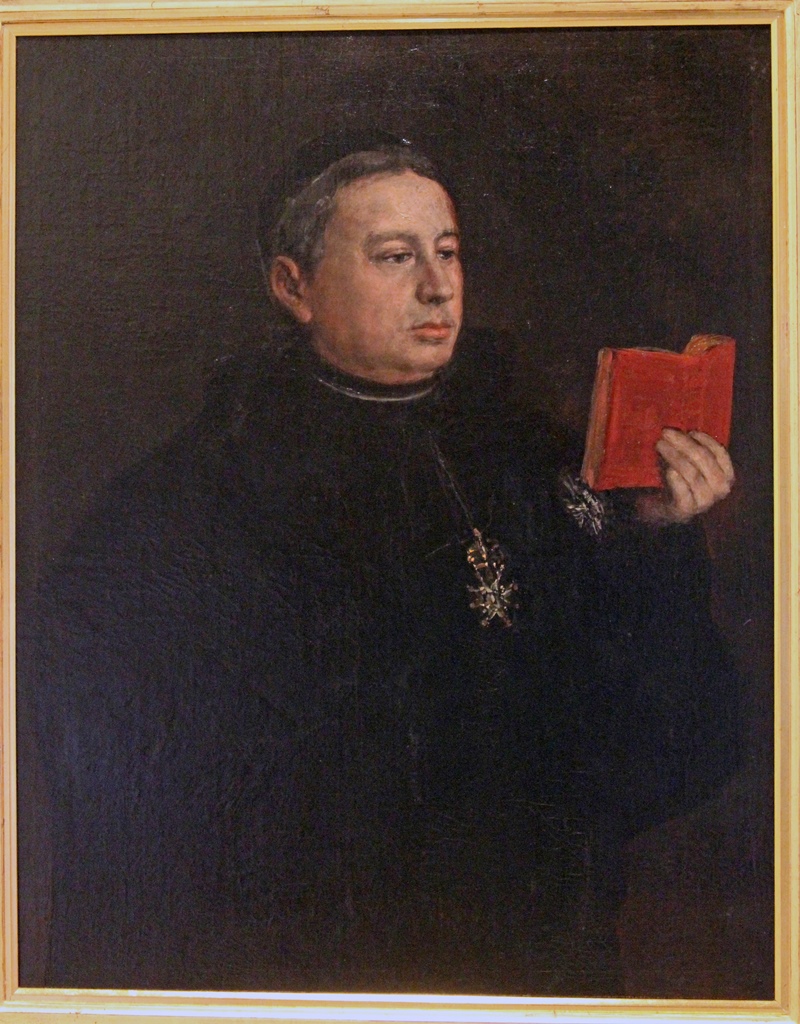
Portrait of Canon Mr. José Duaso y Latre, Francisco de Goya (1824)

Archangel St. Michael, Juan de Espinal (1784)
While viewing the paintings we also found a number of sculptures, apparently made from painted clay, which were
also religiously themed. In addition, well-executed decorative objects were to be seen here and there.

Crying Over the Dead Christ, Pedro Millan (1490)
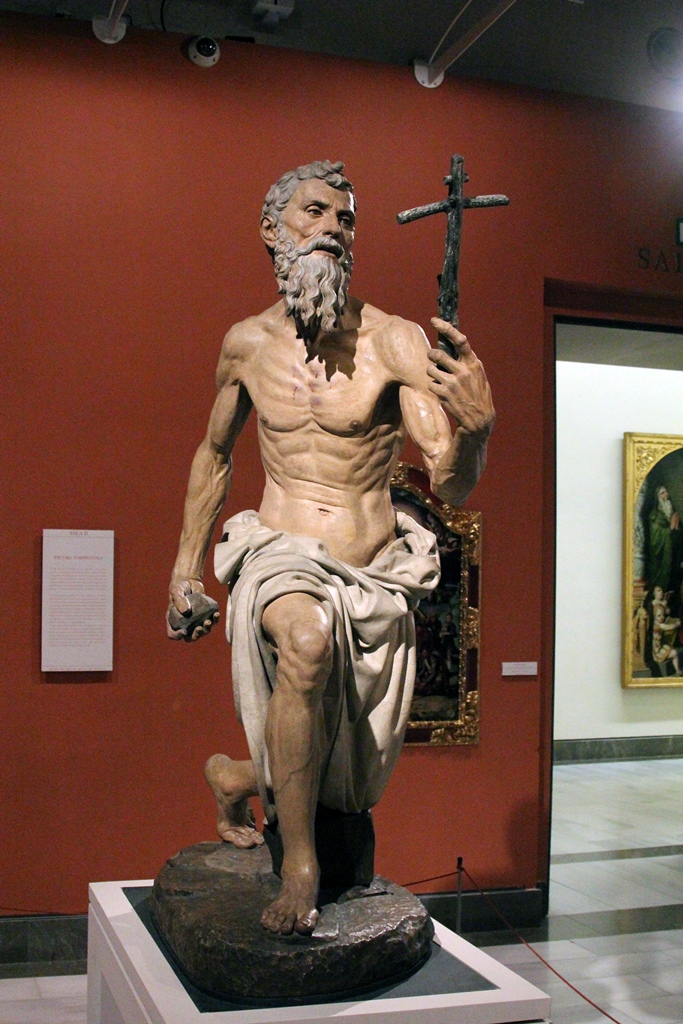
St. Jerome, Pietro Torrigiano (1525)
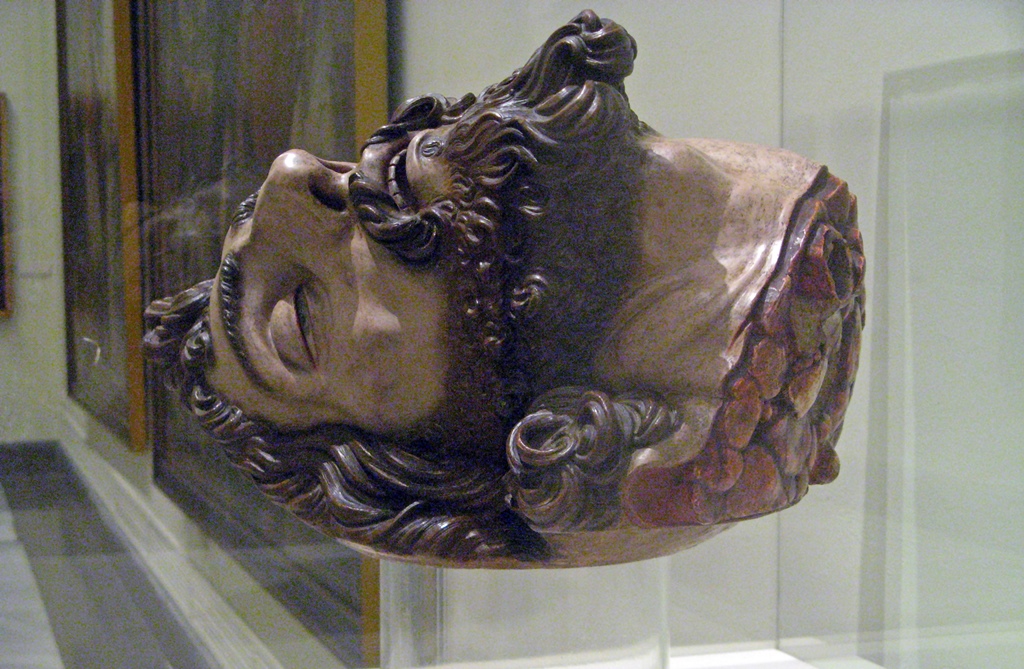
Head of St. John the Baptist, Gaspar Núñez Delgado (1591)
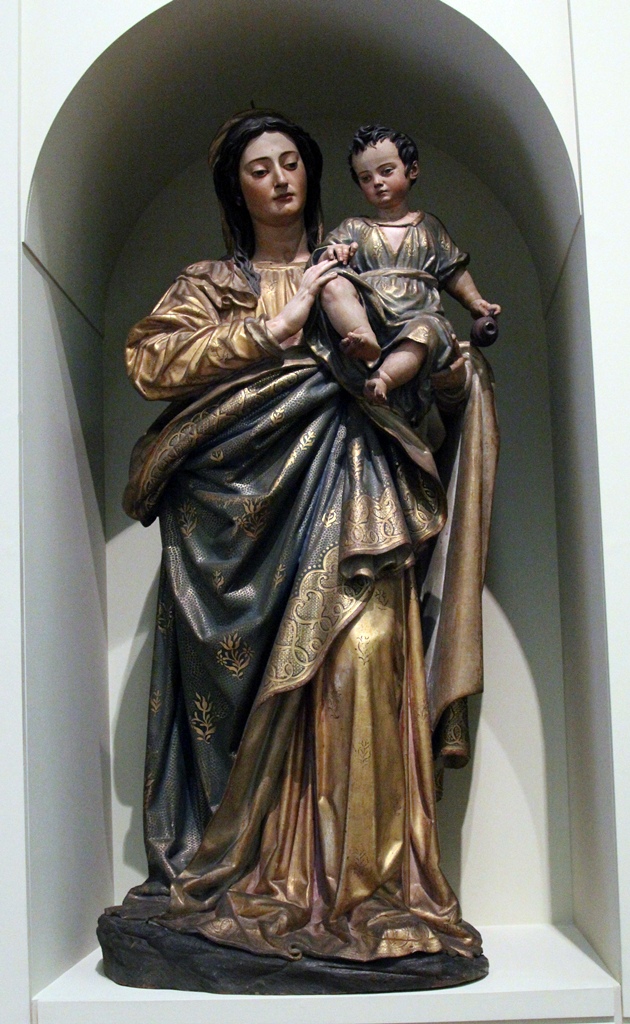
Virgin of the Caves, Juan de Mesa (1623)
Neptune Saltcellar, (Flemish School, ca. 1640)
The newer paintings were generally related to more secular subjects of personal interest to Spaniards.

Dance in a Fair Tent, Manual Cabral Bejarano (19th C.)
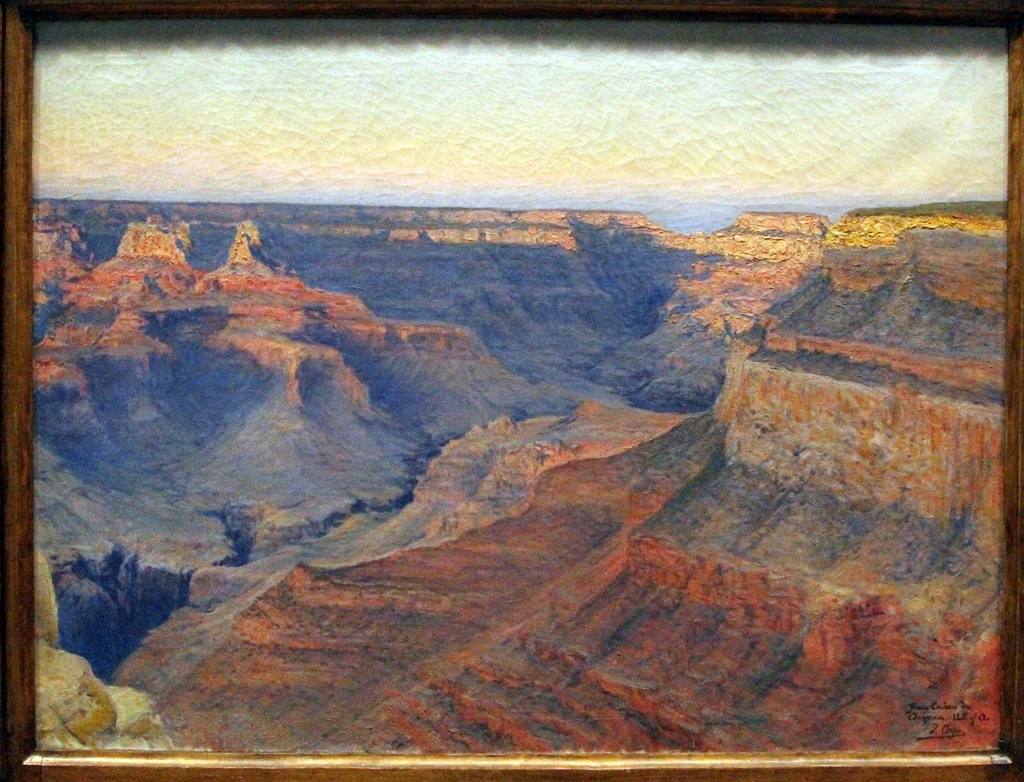
Gran Cañon de Arizona, José Arpa Perea (1920)
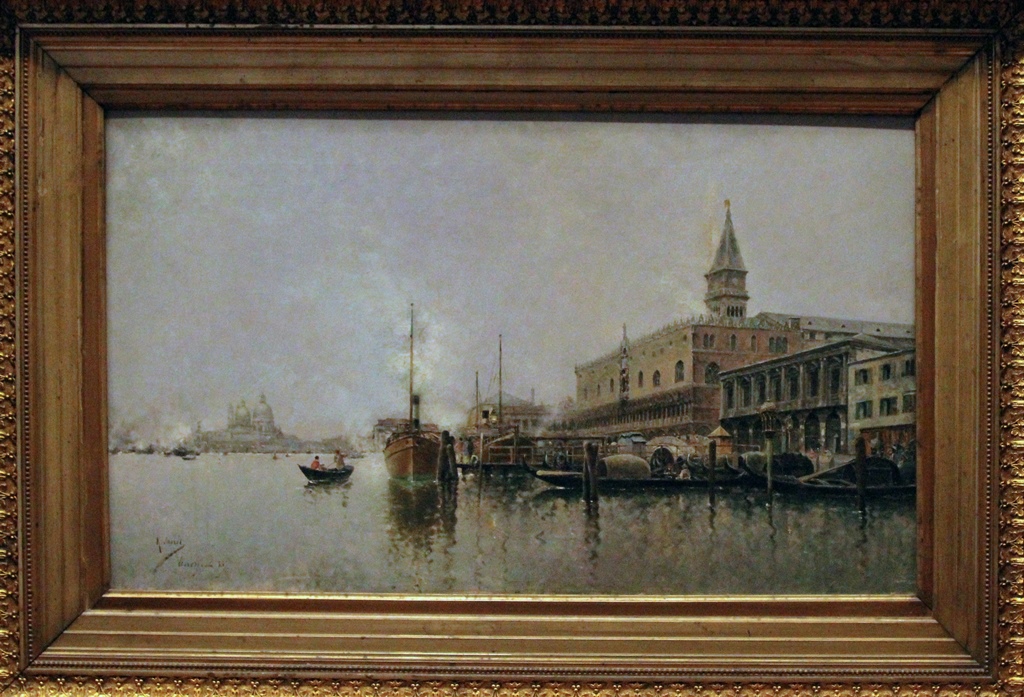
Venice Canal, Rafael Senet (1885)
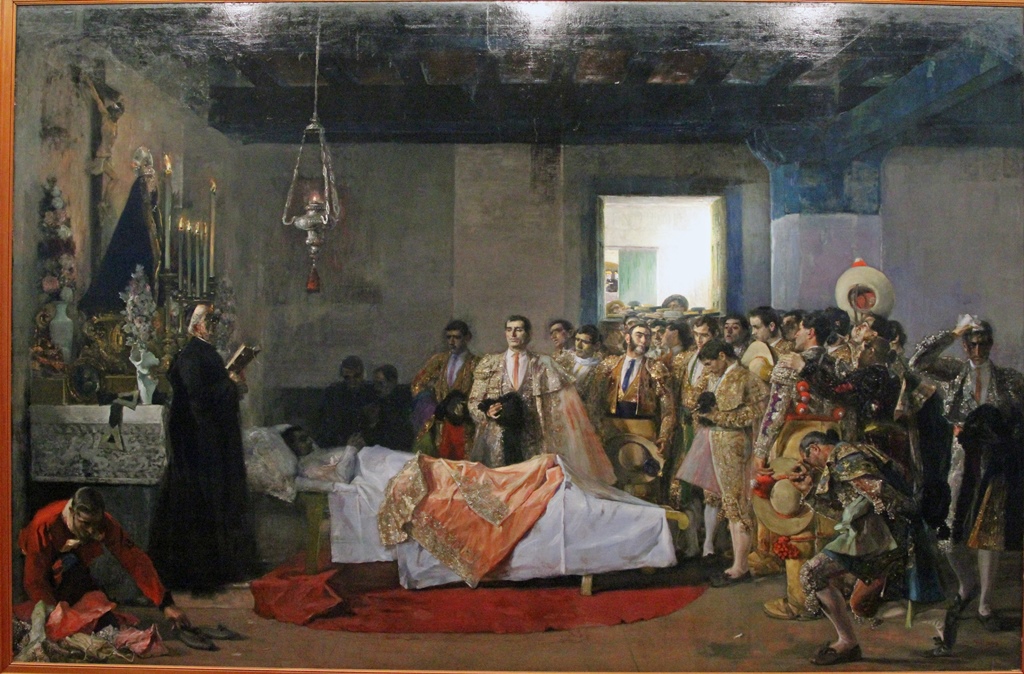
Death of a Maestro, José Villegas Cordero (1913)

Vista de Sevilla, Nicolás Jiménez Alpériz (1893)
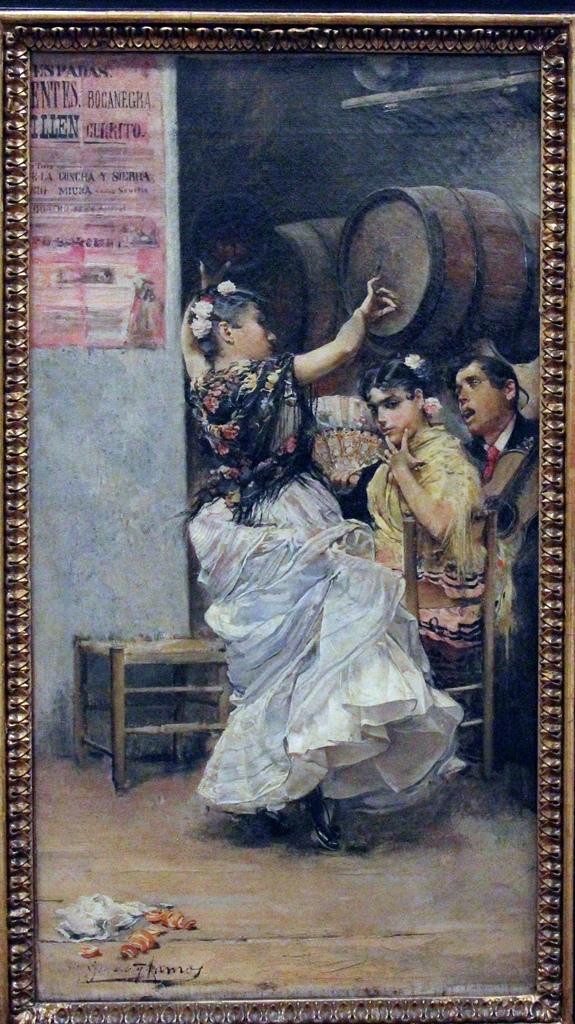
Dancing Bulerías, José Garcia Ramos (1884)
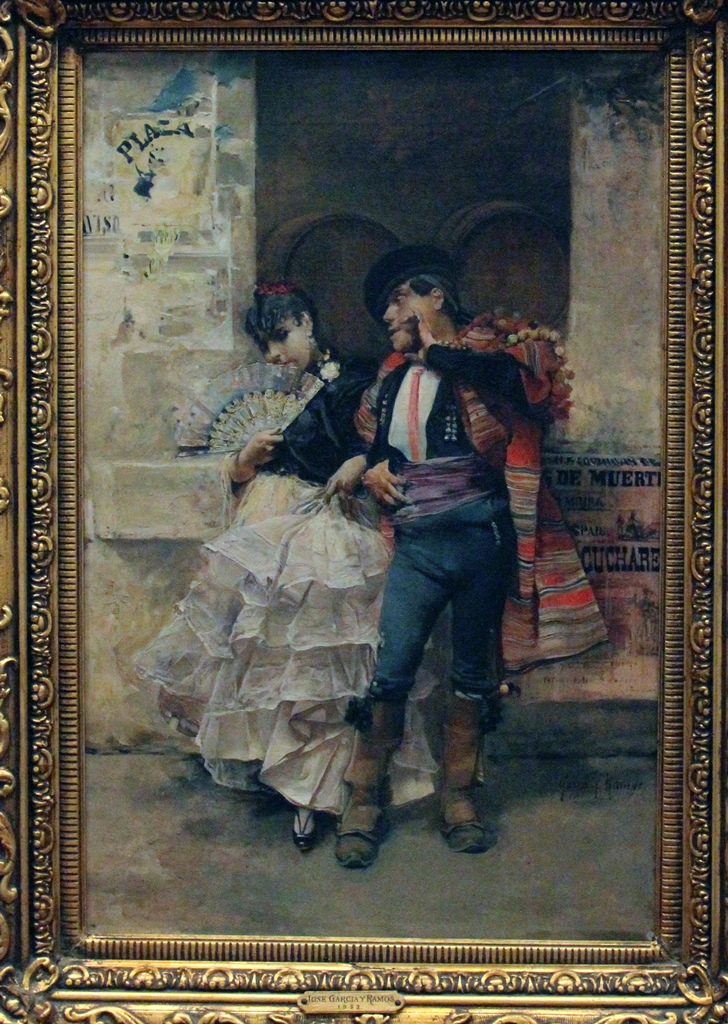
Sevillian Dance Couple, José Garcia Ramos (1882-1900)
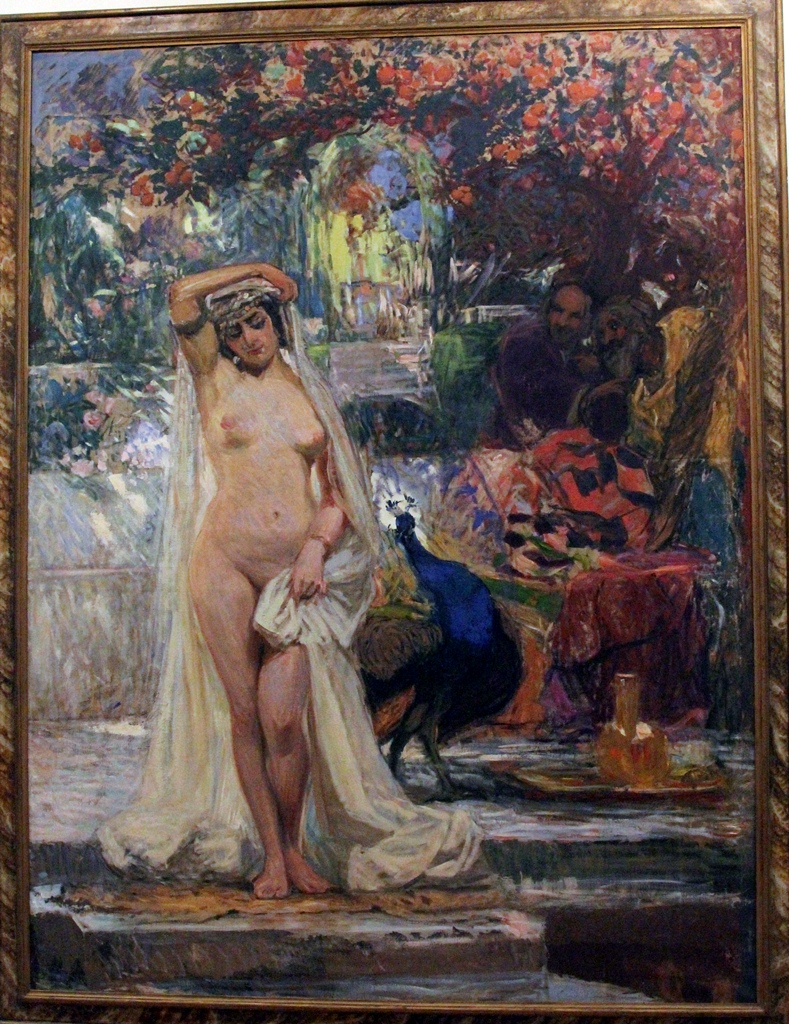
Chaste Susana, Gonzalo Bilbao (ca. 1900)
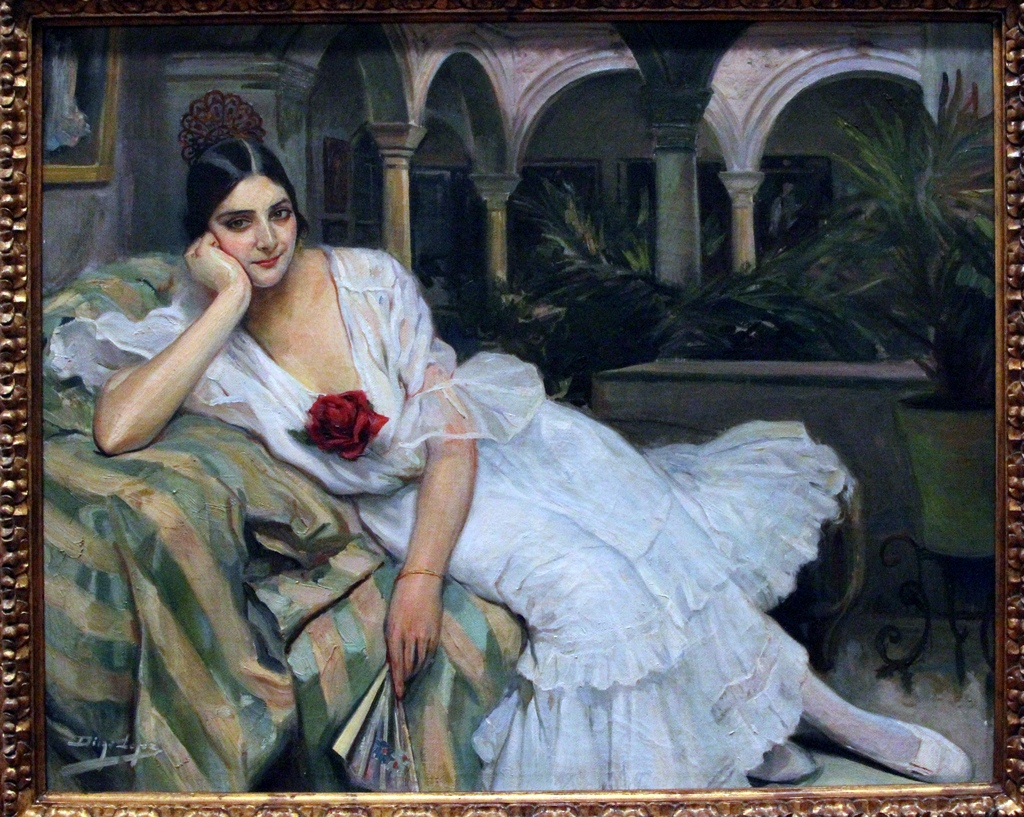
Sevillian Woman in Her Patio, Diego Lopez (1918)
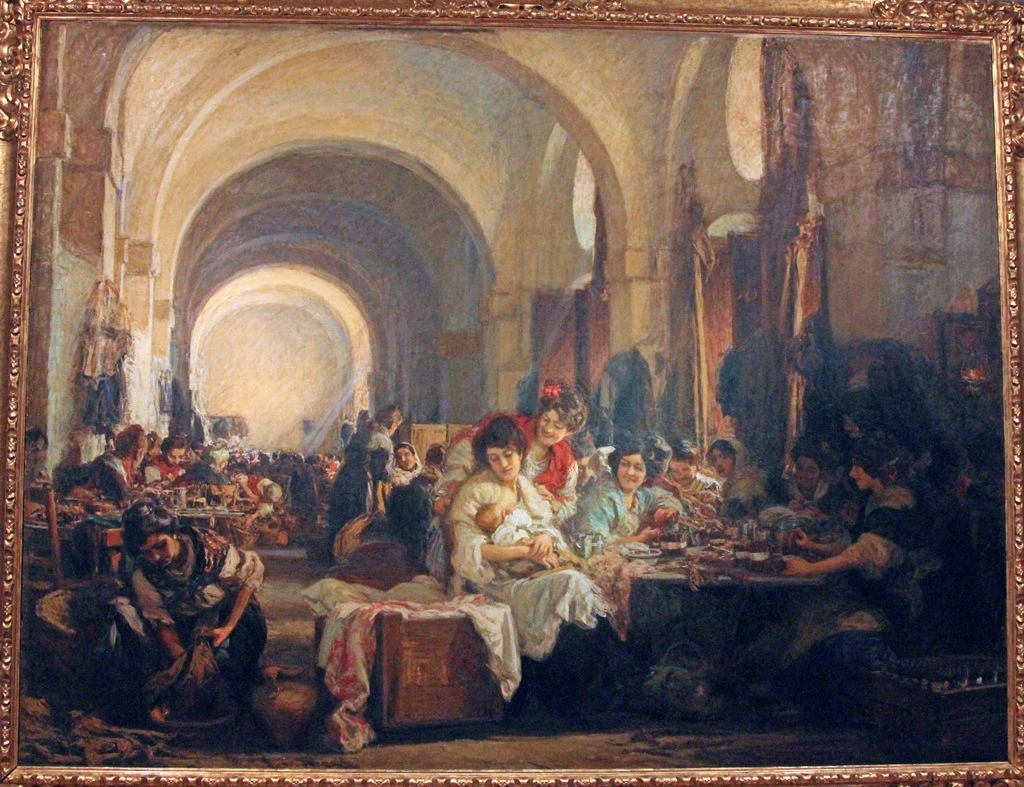
Cigar Makers, Gonzalo Bilbao (1915)
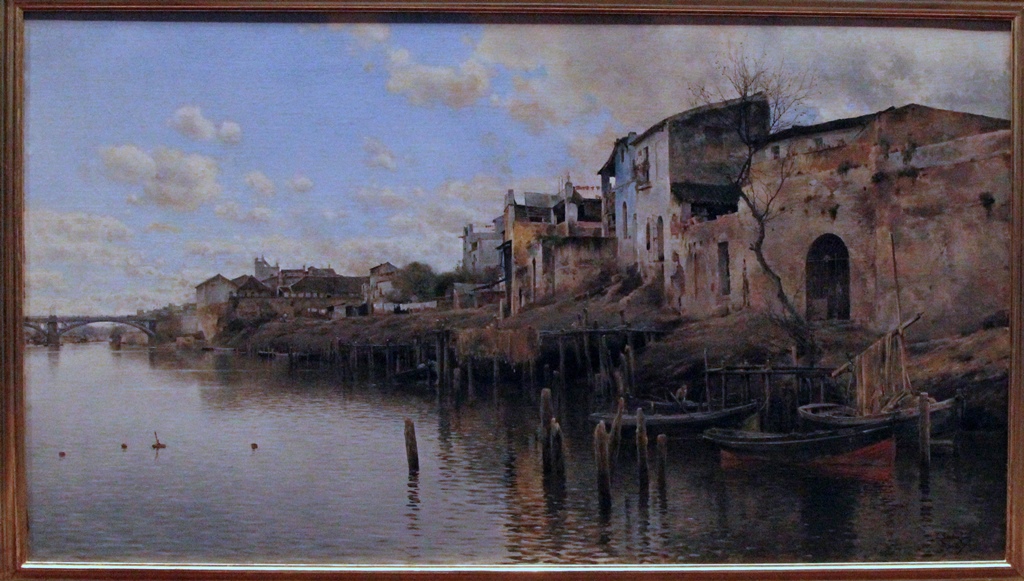
Triana, Emilio Sánchez Perrier (1888-90)

Young Woman with Mantilla and Bullfighters, Francisco Soria Aedo (20th C.)
We finished up just as they were closing the place and headed back to the hotel. We needed to rest up for the
ambitious adventure we’d planned for the following day – a trip to the Alhambra.


